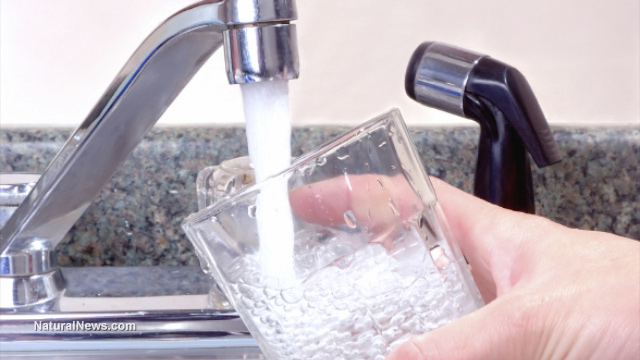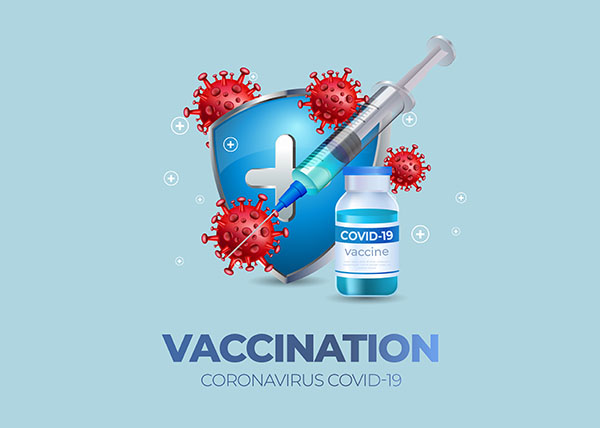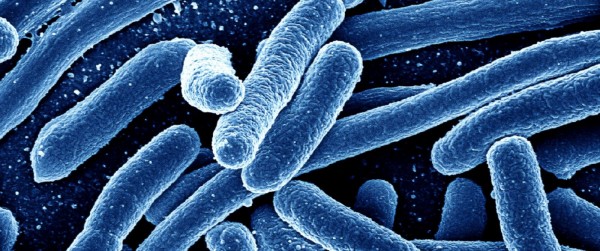USGS: At least 45% of TAP WATER across the U.S. is contaminated with FOREVER CHEMICALS
By oliviacook // 2023-07-26
Tweet
Share
Copy

Almost 45 percent of tap water across the country is contaminated with so-called "forever chemicals," according to the U.S. Geological Survey (USGS).
In a national news release, the USGS reported that at least 45 percent of the nation’s tap water is estimated to have one or more types of chemicals known as per- and polyfluorinated alkyl substances (PFAS).
Its research marks the first time anyone has tested for and compared PFAS in tap water from both private and government-regulated public water supplies on a broad scale across the country. Given this, the USGS study can help members of the public to understand their risk of exposure and inform policy and management decisions regarding testing and treatment options for drinking water.
PFAS are a group of synthetic chemicals used in a wide variety of common applications, from the linings of fast-food boxes and non-stick cookware to fire-fighting foams and other purposes.
High concentrations of some PFAS may lead to adverse health risks in people, according to the Environmental Protection Agency (EPA), which regulates public water supplies. Homeowners are responsible for the maintenance, testing and treatment of private water supplies.
Research is still ongoing to better understand the potential health effects of PFAS exposure over long periods of time. Because they break down very slowly, PFAS are commonly called 'forever chemicals.' Their persistence in the environment and prevalence across the country make them a unique water-quality concern.
USGS scientists tested water collected directly from people’s kitchen sinks across the nation – providing the most comprehensive study to date on PFAS in tap water from both private wells and public supplies, said USGS research hydrologist Kelly Smalling, the study’s lead author.
The study estimated that at least one type of PFAS could be present in nearly half of the tap water in the United States. Furthermore, PFAS concentrations were similar between public supplies and private wells.
In March, the Biden administration announced new national drinking water standards, allowing the EPA to test public water systems for six types of PFAS chemicals and to take action to reduce PFAS levels in water supplies.
Testing is the only way to confirm the presence of these contaminants in wells. Those interested in testing and treating private wells should contact their local and state officials for guidance. (Related: Breakthrough: Canadian scientists develop novel filtration method that permanently removes 'forever chemicals' from drinking water.)
Water near urban areas, factories report higher PFAS concentrations
For the study, published in Environment International, scientists collected tap water from 716 locations (269 private wells; 447 public supply) across the U.S. was collected during 2016–2021, including three locations where temporal sampling was conducted. The low category includes protected lands; the medium category includes residential and rural areas with no known PFAS sources; and the high category includes urban areas and locations with reported PFAS sources such as industry or waste sites. Most of the exposure was observed near urban areas and potential PFAS sources. This included the Great Plains, Great Lakes, Eastern Seaboard and Central/Southern California regions. The study found that most of the chemical exposure was found near urban areas and potential PFAS sources. Researchers tested 32 individual PFAS compounds using a method developed by the USGS National Water Quality Laboratory. The most frequently detected compounds in this study were perfluorobutane sulfonic acid (PFBS), perfluorohexane sulfonic acid (PFHxS) and perfluorooctanoic acid (PFOA) in approximately 15 percent of the samples. The interim health advisories released by the EPA in 2022 for perfluorooctane sulfonate (PFOS) and perfluorooctanoic acid (PFOA) were exceeded in every sample in which they were detected in this study. The study’s results are in line with previous research concluding that people in urban areas have a higher likelihood of PFAS exposure. USGS scientists estimate that the probability of PFAS not being observed in tap water is about 75 percent in rural areas and around 25 percent in urban areas. A separate study published 2022 in Environmental Science & Technology built upon previous research by the USGS and partners regarding human-derived contaminants, including PFAS, in drinking water and PFAS in groundwater. It found that these chemicals are linked to the most common type of liver cancer. 3M, a major manufacturer of PFAS chemicals, announced a $10.3 billion settlement with public water suppliers nationwide after the company was accused of contaminating drinking water, United Press International reported. In June of that year the EPA warned that these PFAS "forever chemicals" cause negative human health effects at much lower levels than previously thought. The USGS study took samples from private wells in addition to samples from public water sources. Because the burden of private-well maintenance falls on the owners, information remains scarce and limited to testing for just a few contaminants due to the high cost. "This circumstance leads to the increased probability of unrecognized contaminant exposures and adverse health effects to private-well dependents and illustrates the continued need for comparable assessments in both private wells and public supply at the point-of-use," the USGS said. Visit TapWater.news for more stories about chemicals found in tap water. Watch this video about "forever chemicals" now contaminating nearly HALF OF US tap water, including private wells. This video is from the InfoWars channel on Brighteon.com.More related stories:
3M agrees to $10.3 billion settlement over allegations of contaminating public water with 'forever chemicals.' From womb to tomb: “Forever chemicals” can be passed on to babies during pregnancy. US water infrastructure is COLLAPSING: Toxic arsenic levels detected in NYC tap water, E. coli in Baltimore water supply. Sources include: TheEpochTimes.com USGS.gov ScienceDirect.com Pubs.ACS.org UPI.com Brighteon.comTweet
Share
Copy
Tagged Under:
environment tap water toxic chemicals toxic water water supply risk ecology dangerous contamination Water Wars clean water PFAS water health badhealth badmedicine badpollution forever chemicals PFAS concentrations US Geological Survey
You Might Also Like
mRNA COVID jabs found to spread from vaccinated to unvaccinated via AEROSOLS
By Ethan Huff // Share
Saudi Arabia to extend its voluntary oil production cut until September
By Ramon Tomey // Share
BULKING UP: Mark Zuckerberg loading up on McDonald’s amid potential MMA bout with Elon Musk
By Ramon Tomey // Share
“Pyramid” discovered beneath the ice in Antarctica is actually a mountain
By Zoey Sky // Share
Recent News
Iran conducts surprise missile drills amid rising tensions with Israel
By kevinhughes // Share
Kremlin denies reports of plans to "restore Soviet influence"
By bellecarter // Share
How AI news bots are quietly reshaping public opinion
By avagrace // Share
The Unshackled Physician: A surgeon's awakening to medical tyranny
By ramontomeydw // Share











